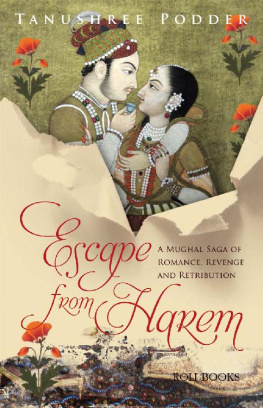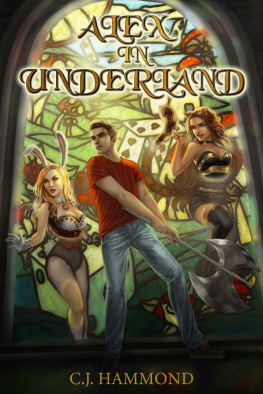A self confessed word-a-holic and a traveller, Tanushree is sure to be packing her bags and boots to zip around the world when not brandishing her pen. With two successful novels, few best-selling non-fiction titles and a few hundred travel tales under her belt, she is all set to launch into yet another voyage with words. A bundle of optimism with wandering feet and a kaleidoscope of dreams, she loves nothing better than flirting with clauses and phrases.
After leading a nomadic life for several decades, thanks to the Indian Army, she has finally grown roots at Pune.
OTHER INDIAINK TITLES |
Anjana Basu | Black Tongue |
Anjana Basu | Chinku and the Wolfboy |
Anjum Hasan | Neti, Neti |
A.N.D. Haksar | Madhav & Kama: A Love Story from Ancient India |
Aseem Vadehra | A Chance at Happiness |
Ayesha Salman | Blue Dust |
Boman Desai | Servant, Master, Mistress |
Chitra Banerjee Divakaruni | The Mirror of Fire and Dreaming |
Chitra Banerjee Divakaruni | The Conch Bearer |
Chitra Banerjee Divakaruni | Shadowland |
Claudine Le Tourneur dlson | Hira Mandi |
Greta Rana | Hidden Women: The Ruling Women of the Rana Dynasty |
Haider Warraich | Auras of the Jinns |
I. Allan Sealy | The Everest Hotel |
I. Allan Sealy | Trotternama |
Indrajit Hazra | The Garden of Earthly Delights |
Jaspreet Singh | 17 Tomatoes: Tales from Kashmir |
Jawahara Saidullah | The Burden of Foreknowledge |
Kalpana Swaminathan | The Page 3 Murders |
Kalpana Swaminathan | The Gardeners Song |
Kamalini Sengupta | The Top of the Raintree |
Kota Neelima | Death of a Moneylender |
Madhavan Kutty | The Village Before Time |
Manohar Malgonkar | A Bend in the Ganges |
Manohar Malgonkar | Cactus Country |
Paro Anand | Weed |
Paro Anand | Pure Sequence |
Rakesh Satyal | Blue Boy |
Ranjit Lal | Black Limericks |
Ranjit Lal | The Small Tigers of Shergarh |
Ranjit Lal | The Simians of South Block and Yumyum Piglets |
Rani Dharker | Anurima |
Raza Mir & Ali Husain Mir | Anthems of Resistance: A Celebration ofProgressive Urdu Poetry |
Sanjay Bahadur | The Sound of Water |
Shandana Minhas | Tunnel Vision |
Selina Sen | A Mirror Greens in Spring |
Sudhir Thapliyal | Crossing the Road |
Susan Visvanathan | Something Barely Remembered |
Susan Visvanathan | The Visiting Moon |
Susan Visvanathan | The Seine at Noon |
Susan Visvanathan | Nelycinda and other Stories |
Tanushree Podder | Boots Belts Berets |
FORTHCOMING TITLES |
Sanjay Bahadur | HUL Cry Rebel |
Ranjit Lal | Bambi, Chops and Wags |


Tanushree Podder, 2013
All rights reserved. No part of this publication
may be reproduced or transmitted in any form
or by any means, without the prior permission of the publisher.
Characters and significant events in this book are not fictitious; but personalities, interactions and thoughts, and words are figments of the authors imagination.
First published in 2013
IndiaInk
An imprint of
Roli Books Pvt Ltd
M-75, Greater Kailash II Market
New Delhi 110 048
Phone: ++91 (011) 4068 2000
Fax: ++91 (011) 2921 7185
E-mail: info@rolibooks.com; Website: rolibooks.com
Also at
Bengaluru, Chennai, & Mumbai
Cover design: Saurav Das
Layout design: Sanjeev Mathpal
Production: Shaji Sahadevan
ISBN: 978-81-86939-76-5
For Ajoy
My guiding star my Polaris
Preface
The foundation of the great Mughal Empire in India was laid by Babar, a minor prince of Farghana in Afghanistan. Hounded by his rivals in Farghana, he crossed the rugged mountains to reach the rich territory of Hindustan, which was known as the Golden Bird in those days. Although Babar was a Turk, he claimed to have descended from Changez Khan on his mothers and Timur on his fathers side. To him goes the credit of establishing the Mughal dynasty in 1526, the word Mughal being an altered form of the word Mongol. Babars son, Humayun, a benevolent but weak ruler spent much of his time fleeing from or chasing his adversaries. His unceremonious death caused by falling from the staircase of his library brought an end to his turbulent rule.
It was his son Akbar, who proved to be the greatest Mughal ruler. An able administrator and shrewd statesman, he expanded the empire to encompass almost two-third of Hindustan. One of the most successful strategies devised by Akbar for the expansion of his empire was the matrimonial alliances with the proud Rajput kings.
Akbar ruled for five glorious decades, from 1556 to 1605, during which the Mughal Empire grew to be one of the wealthiest and ably-administered empires in the world. It became synonymous with splendour, power, wealth, and culture. It is said that the revenue earned by the Mughal Empire during Akbars reign amounted to more than seven times the revenue earned by the British through their colonies around the world. It was the era of architectural splendour when opulent structures like the Agra Fort and Lahore Fort were built. It was also the age of sublime music, miniature art forms, and spiritual liberalism.
Jahangir, the next Mughal ruler, inherited a rich empire that needed no great efforts to sustain. He went down in history as one who allowed his wife Nurjahan to hold the reins of the empire while he drowned himself in wine and opium. However, like other Mughal rulers before him, Jahangir too was a connoisseur of art and left a perfect account of his reign in the form of a diary, the Jahangirnama . His curious mind recorded every new thing a bird, a flower or a fruit that he came across. Whether it was his impressions about art, science, anatomy or nature, he left detailed accounts of his observations in his diary. The artefacts of this period are testimony to the splendour of the royal court of Jahangir.

















